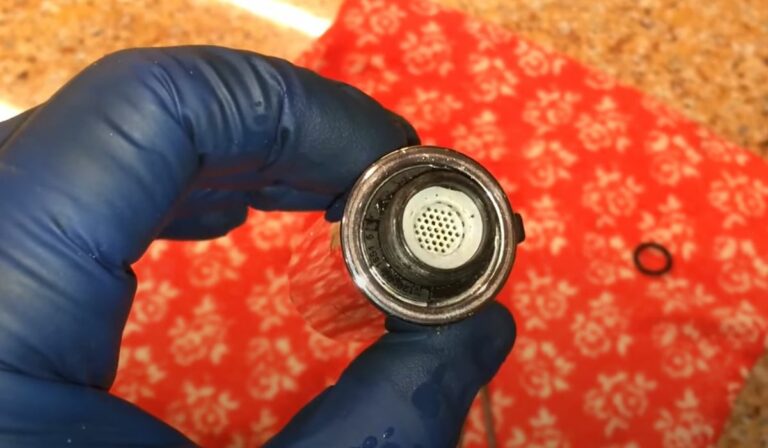How To Restain Kitchen Cabinets
Restaining your kitchen cabinets can completely transform the look and feel of your kitchen without the cost of a full remodel. Whether your cabinets have faded over time or you’re craving a new finish, restaining allows you to refresh them with a fresh color or deepen their natural wood tone. In this guide, you’ll learn how to tackle the restaining process step-by-step, from assessing your cabinets to sealing and maintenance. By following these clear instructions, you’ll confidently bring new life to your kitchen cabinetry.
Assessing Your Kitchen Cabinets Before Restaining
Before you jump into restaining, take a close look at your cabinets to determine their current condition and what preparations they require. Check for any damage like deep scratches, dents, or water stains that may need repair. Also, identify the type of wood and finish used originally, some finishes are more stubborn and will affect your approach to removal and staining. Recognizing whether your cabinets are solid wood or veneer will also help decide the best products and techniques. Proper assessment ensures your effort won’t be wasted and helps you avoid potential pitfalls along the way.
Gathering Necessary Tools And Materials
Having the right tools and materials ready before starting makes the restaining process smoother. You’ll need:
- Safety gear: gloves, goggles, mask
- Screwdriver for removing cabinet doors and hardware
- Chemical stripper or sanding tools
- Sandpaper in varying grits (80, 120, 220)
- Clean rags and tack cloths
- Wood stain of your choice
- Paintbrushes or foam applicators
- Wood conditioner (optional, but recommended for soft woods)
- Polyurethane or other sealants
Organizing these ahead of time means you won’t be scrambling mid-project and your workflow will be efficient and safe.
Preparing Kitchen Cabinets For Restaining
How To Remove Old Finish From Cabinets
Start by removing cabinet doors and hardware to give yourself full access. Then, use a chemical stripper to soften and remove the old finish. Apply it evenly with a brush, allow it to sit as per product instructions, and then scrape off the softened finish gently with a plastic scraper to avoid damaging the wood. If you prefer a more natural option, sanding can be an alternative but requires more elbow grease.
Sanding Techniques For A Smooth Surface
Once the majority of the old finish is off, sand the entire surface starting with coarser grit sandpaper like 80 to strip remaining finish and smooth imperfections. Progress to finer grits (120, then 220) to create an even, smooth surface that’s ready to accept stain. Always sand in the direction of the wood grain to avoid scratches that show through the stain.
Cleaning Cabinets After Sanding
After sanding, thoroughly wipe down cabinets using a tack cloth or a damp microfiber cloth to remove all dust and debris. Any leftover dust can create blotches or uneven stain application, so don’t rush this step. Ensuring a clean surface guarantees better stain absorption and overall finish quality.
Choosing The Right Stain For Your Cabinets
Selecting the perfect stain depends on the wood type and the look you want to achieve. Oil-based stains give deeper penetration and a rich, long-lasting finish but have a stronger odor and longer drying time. Water-based stains dry faster and clean up easily but sometimes don’t penetrate as deeply, suitable for softer woods. Consider the color tones too, warm stains enhance natural wood grains while cooler stains create a modern vibe. Testing your stain on a hidden cabinet section helps preview the final look and prevents surprises.
Applying The Stain Correctly
Apply stain evenly using a high-quality brush or foam applicator, working along the wood grain for a uniform finish. Start with thin coats to avoid blotching: you can always build up to a richer color with additional coats. Let the stain penetrate for the manufacturer’s recommended time before wiping away excess with a clean cloth, ensuring you don’t leave pools that dry darker. Good lighting helps you spot any missed spots or uneven application immediately.
Sealing And Protecting Your Restained Cabinets
Once your stain is completely dry, typically 24 to 48 hours, it’s time to seal your cabinets to protect them from moisture, grease, and daily wear. Choose a durable polyurethane or similar clear coat designed for kitchen use. Apply thin, even coats with a synthetic brush to avoid brush marks. Lightly sand between coats with very fine sandpaper (320 grit) to promote adhesion and smoothness. Two to three coats usually provide sufficient protection, balancing durability and appearance.
Tips For Maintaining Your Newly Restained Cabinets
Maintaining your beautifully restained cabinets is key to their longevity. Use gentle, non-abrasive cleaners and a soft cloth for routine cleaning to avoid scratching the finish. Quickly wipe up spills to prevent water damage or staining. Avoid hanging heavy items on cabinet doors or using harsh chemicals that can degrade the finish. Periodically inspect for chips or wear spots, touching up with the original stain and sealant if necessary to keep your cabinets looking fresh and protected.
Conclusion
Restaining your kitchen cabinets is a rewarding DIY project that gives your kitchen a fresh, updated look without the expense of replacement. By carefully assessing your cabinets, preparing them properly, choosing the right stain, and applying each step with attention to detail, you ensure a beautiful, durable finish. With proper sealing and regular maintenance, your newly restained cabinets will stay stunning for years to come, proving that a little effort goes a long way in transforming your kitchen’s heart.


